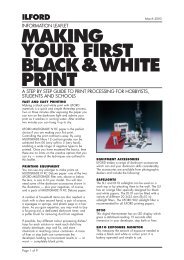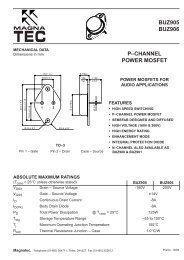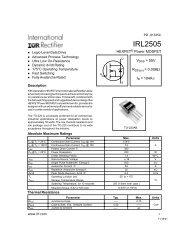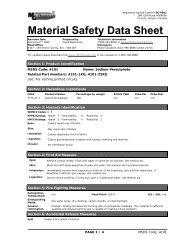SWITCHMODE⢠Power Supply Reference Manual
SWITCHMODE⢠Power Supply Reference Manual
SWITCHMODE⢠Power Supply Reference Manual
You also want an ePaper? Increase the reach of your titles
YUMPU automatically turns print PDFs into web optimized ePapers that Google loves.
SMPSRMFactors 3, 4 and 5 have a direct affect upon thereliability of the system. Switching power suppliesdeliver constant power to the output load. This power isthen reflected back to the input, so at low input voltages,the input current must be high to maintain the outputpower. Conversely, the higher the input voltage, thelower the input current. The design goal is to place asmuch as possible of the input voltage across thetransformer or inductor so as to minimize the inputcurrent.Boost–mode topologies have peak currents that areabout twice those found in forward–mode topologies.This makes them unusable at output powers greater than100–150 watts.Cost is a major factor that enters into the topologydecision. There are large overlaps in the performanceboundaries between the topologies. Sometimes the mostcost–effective choice is to purposely design one topologyto operate in a region that usually is performed byanother. This, though, may affect the reliability of thedesired topology.Figure 4 shows where the common topologies are usedfor a given level of DC input voltage and required outputpower. Figures 5 through 12 show the commontopologies. There are more topologies than shown, suchas the Sepic and the Cuk, but they are not commonlyused.1000Half–BridgeDC INPUT VOLTAGE (V)10042.510FlybackNon–IsolatedBuckFull–BridgeFull–BridgeVery HighPeak Currents10100OUTPUT POWER (W)1000Figure 4. Where Various Topologies Are Usedhttp://onsemi.com9













